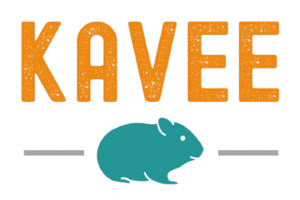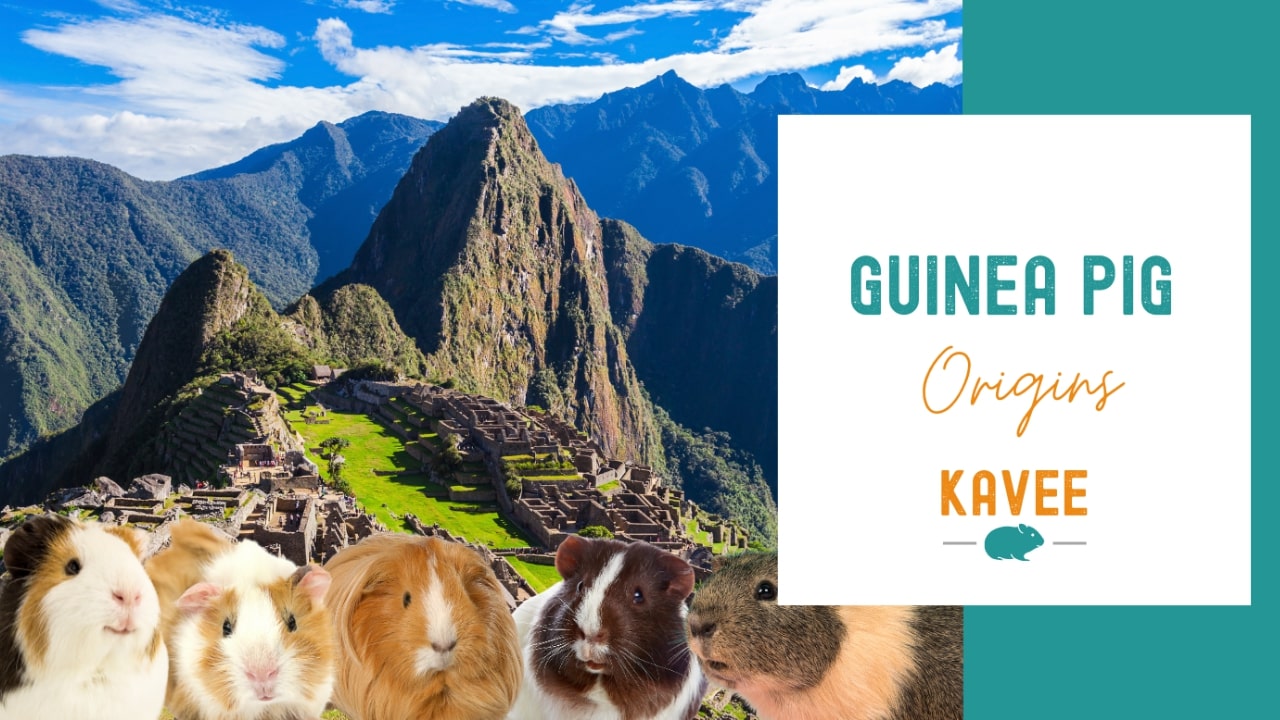Have you ever got lost gazing lovingly at the chutting little pig snuggled in your lap and found yourself wondering: where on Earth did this adorable little ball of fluff come from?
Your pampered piggy may look quite content cozied up in their cage right now, but this couldn’t be further from the life of their original cavy ancestors. Before they were domesticated all those thousands of years ago, guinea pigs roamed free across the grassy plains, rocky outcrops, and forest edges of the Andes region in South America.
From the guinea pig’s origins to the present day, let’s take a more in-depth look at the cute cavy’s low points, high points, and milestones throughout history.

Where Do Guinea Pigs Come From?
It turns out the name ‘guinea pig’ is a bit of a red herring. Contrary to popular belief, guinea pigs don't come from Guinea. And just to get you scratching your head even more, they’re not pigs either!
In fact, cavies prove particularly difficult to define. They may well have the portly shape and sound of a pig, but size-wise they have more in common with a large rat. Guinea pigs have indeed been classified as rodents, as they share many defining traits common to hamsters, squirrels, rats, and more. Just think of their long gnashers!
Guinea pigs come from the Andes
As we briefly mentioned before, guinea pigs originate from South American countries like Ecuador, Peru, Bolivia, and more specifically, the mountainous Andes region. Despite their namesake, these piggies are rodents, since they belong to the Caviidae family which is part of the order Rodentia.
The Latin name for ‘guinea pig’ is in fact ‘cavia porcellus’, fondly shortened to ‘cavy’, a popular nickname that originated directly from the South American vernacular.

History of Guinea Pigs: From South America to the Whole World
Now it’s time to take take a trip down memory lane and have a closer look at some key events in guinea pig history. So sit back, relax, and get comfy. This is the largely untold story of the humble piggy - from when they were first recorded 26 million years ago, right up until the present day.
26 million years ago - The ancestors of guinea pigs appeared in South America
Let’s start by going way, way, way back to the very beginning. Before guinea pigs settled into the relaxed furry potatoes that populate our homes across the globe, they probably looked quite different. Based on the information available, we can assume that pre-evolved guinea pigs would have had familiar rodent-like features but been larger than a ferret in stature.
Yep, cavies have some pretty primitive relatives, so they’ve been around for a while and seen a lot! The guinea pig’s family tree is actually pretty ancient, with the first members of the Caviidae family likely to have evolved sometime between 26 and 27 million years ago.
Records show that it was around this time that the guinea pig as we know it may have come into existence, specifically when their ancestors made the journey to South America from places like North America, Europe, and Asia. From here, the Caviidae family then settled in the Andes and evolved into the little piggy we recognize and love.

5,000 BC - Guinea pigs are first domesticated in the Andes
Guinea pigs are one of the oldest domesticated breeds on the planet, with primitive records showing that the budding relationship between people and guinea pigs began as early as 5,000 BC! It’s believed that this process of domestication began when guinea pigs lived alongside the local people of the Andean region, in places like Ecuador, Peru, and Bolivia.
At this time in history, piggies really had mixed life experiences. The lucky ones were kept as pets by families, where they’d be able to roam around freely in homes. On other occasions, they might meet quite a bleak fate. It’s not very nice to think about, but some guinea pigs were commonly kept as livestock for food. And believe it or not, this is still common today, with guinea pig regularly appearing as a delicacy on many menus throughout Latin America.
In an even more alarming twist of events, poor piggies could find themselves at the center of ancient religious rituals, where they’d be offered up as a sacrifice to the Gods. And this isn't even the most bizarre story!
According to the precepts of Andean medicine, it was believed that guinea pigs could detect illness. Picture this: a guinea pig would be rubbed over the body of a sick person and, once the alarmed little piggy started to complain with some loud squeaks, people took that as a sign that the infected area had been identified. As intriguing as this method sounds, we absolutely wouldn’t advise you to try this at home!
In short, guinea pigs were kept for many different reasons, but one thing’s for certain: they were highly regarded and maintained a prominent position in the lives of ancient civilizations.

100-800 AD - Guinea pigs become spiritual animals for the Moche
You’ll be relieved to hear that thankfully, not everyone in South America regarded guinea pigs as a tasty snack. The Moche civilization, for instance, not only loved their piggy companions but actually went as far as to worship them.
Now, if you’ve ever thought about setting up a shrine to your floofer or found yourself praising the very ground they walk on, then you would have felt right at home with this ancient civilization!
Evidence of this idolatry and devotion has been discovered in archaeological digs dating from as far back as 500 BC. Some examples include artwork, sculptures, and even statues of guinea pigs. In our opinion, we could definitely take a leaf or two out of the Moche’s book. A guinea pig statue would be a fine addition to any mantelpiece!
1200 AD - Guinea pigs are bred for companionship and food by the Incas
Fast forward just over a millennium, and another civilization set sight on this irresistible furball. Guinea pigs were extremely popular among the Incas, and lived long and prosperous lives alongside them for hundreds of years.
The Incan people were located in and around the Andean mountain range in South America from the thirteenth to the sixteenth century, and are renowned for their incredible works of art and seriously impressive architecture. They bred guinea pigs for a multitude of different purposes, but most commonly for food, pelts, and (gulp!) more ritual sacrifices.

1600s - Guinea pigs are brought to Europe by explorers
When Spanish explorers first visited South America in the 1530s, there was plenty to discover and marvel at. From foreign cultures to stunning scenery, to perhaps the most piggily curiosity of them all… guinea pigs!
These Spanish travelers were enraptured by guinea pigs (quite understandably), and couldn’t resist bringing some back home with them. Making the brave journey in several boats to the Spanish mainland, guinea pigs were subsequently introduced over the following years to further European countries like England and Holland.
From their rather humble beginnings living among the simple Andean mountain folk, European guinea pigs saw a huge rise in social standing. An exotic rarity that found favor with the aristocracy of the day, piggies enjoyed a lavish life of luxury as sweet little companion animals to wealthy families.
In fact, piggies can even go as far as to claim royal status. Queen Elizabeth I was one of the first European advocates of the guinea pig and even kept one as a pet. With piggies gaining popularity in upper-class circles and royal courts, they quickly established themselves as the family-favorite pet we can’t get enough of today.
1800s - Guinea pigs are used as experiment animals
Here at Kavee, we’re strictly against animal testing in all its forms. We believe in a cruelty-free world where our furry friends can live comfortably alongside us. But by the 1800s, scientific advancements were being made and it became common practice to use animals in laboratory tests, particularly in experiments involving nutrition, diseases, toxicology, and health.
Guinea pigs made seemingly excellent test subjects because not only are they small and relatively low-maintenance to care for, but they also have biological similarities to us humans. For example, piggies are also unable to produce their own Vitamin C, so this made them ideal to carry out research on.
While many important scientific breakthroughs may have been made through these experiments, this led to a cruel and sad existence for our sweet pigs. Life in a cramped cage is far from fun, and the unknown results of testing can cause both adverse long-term health effects and fatalities. In some cases, it has even led to genetic mutations like the skinny pig, a breed born out of a rogue laboratory experiment gone wrong.

1900s - Guinea pigs become popular in North America and the rest of the world as pets
From the 1900s to the present day, there has been an explosion in the worldwide popularity of guinea pigs (we can’t say we’re surprised - it was only a matter of time!).
During this relatively short period, piggies have been selectively bred for looks and temperament, resulting in a gorgeous assortment of plump furry potatoes of all shapes, sizes, and colors. Sought-after traits have been passed down from generation to generation, meaning that piggies tend to be endlessly sociable, affectionate, enthusiastic, and loving little companions. This has resulted in the 13 breeds of guinea pigs officially recognized by the American Cavy Breeders Association today - and the list keeps growing!

Guinea Pig Origins FAKs - Frequently Asked Kavees
Are guinea pigs from Guinea?
Despite the namesake, guinea pigs have no actual connections to the West African country of Guinea. If we travel back in time, we could find these adorable piggies roaming free in a whole other continent, more specifically the Andes region in South America.
When were guinea pigs first domesticated?
It’s widely believed that the domestication of guinea pigs first occurred between 5,000 and 7,000 years ago when guinea pigs lived alongside the Andean mountain folk.
Do people in South America really eat guinea pigs?
We’re sorry to say that yes, it’s true. Guinea pig really is a traditional delicacy in South American cuisine. In Peru, it’s estimated that as many as 65 million piggies are consumed each year! They originally became a popular food due to being inexpensive to raise and requiring less space than pigs or cattle to keep.









